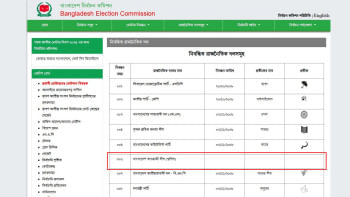How did rickshaws become our heritage?

I don't remember the first time I hopped on a rickshaw. I don't think anyone does; it's just one of those memories that fade into thousands of commutes.
In between these commutes, the humble rickshaw has transformed in front of our eyes, from something we take for granted to a symbol of our culture and history. On December 6, Unesco recognised rickshaws and rickshaw art as intangible cultural heritage. While the country is beaming with pride, this recognition makes me wonder: when exactly did we start appreciating the rickshaw, to a point that we now consider it to be part of our collective identity?
It is widely believed that the rickshaw was introduced as a mode of transport in Japan around the end of the 19th century. Known as jinrikisha, these weren't the cycle-rickshaws we're used to: they were like the thela gari, with two wheels and someone literally pulling the vehicle.
As far as Bangladesh is concerned, many say cycle-rickshaws made their grand entrance through Kolkata in the 1930s. The streets of Dhaka, however, saw these three-wheelers years later (which is interesting as rickshaws have now become part of the capital's very character).
In the present day, rickshaw bodies are assembled, decorated, and maintained at worn-down workshops, usually located in rickshaw bosti. This is where the magic happens, and the art mistri enters the show. These painters come from different areas of Bangladesh and hone their craft under a master's apprenticeship for years. While other workers are busy with the applique decorations and tassels, the painters cover the rickshaws in vibrant colours—the star of the show being the painting on the back.
The bliss of rural life, the exciting world of cinema, the devotion to one's faith—all of our lives are reflected in popping shades of green, blue, and magenta on the backs of rickshaws. If your eyes have ever evaded the smog, dust, and dreary buildings to only fall on a rickshaw, you might have noticed a different city—one that houses human-like animals, one or two odd helicopters, and the writing in Bangla: "Maa'er doa." Maybe that's why we've embraced rickshaws as part of our identity and heritage.
But what exactly is heritage?
While definitions are endless, according to the Center for Heritage & Society at the University of Massachusetts Amherst, heritage is "the full range of our inherited traditions, monuments, objects, and culture—in tangible and intangible forms." It goes on to say, "Heritage is, or should be, the subject of active public reflection, debate, and discussion. What is worth saving?" Let's reflect on this.
Rickshaws becoming a part of our heritage points to one thing: that it needs to be preserved, protected. But why would something need protection? Are our rickshaws at risk? Actually, they most definitely are.
For a long time, rickshaw-pullers—both blatantly and systematically—have been abused, discriminated against, and othered by the malik (rickshaw owners), the common people, and even by the state. The tags of inefficiency and under-development have always accompanied these vehicles.
Authorities, as well as many experts, have singled out rickshaws as the bane of Dhaka's traffic. In 2019, rickshaws were barred from plying three major roads. Has this improved traffic? No one knows. If we go way back, the country's Third Five-Year Plan prescribed, "Slow-moving vehicles such as pedal rickshaws, push and pull carts, etc, should be gradually eliminated through development of automotive vehicles."
This quest for modernisation is deep-seated. "The dynamics of bans and restrictions of rickshaws in Dhaka is a part of a global trend towards auto-oriented development," states a 2018 study. "These bans are also part of a blue-print to help secure a place for national and international capital in costly transport infrastructure."
While many experts call for improving public transportation and restricting slow-moving, non-motorised vehicles, others say it's all the private cars and buses that are largely to blame, and not the rickshaws and vans. Who's correct? The truth probably lies somewhere in the middle.
What I do know is how vilifying rickshaw pullers makes their tough lives even tougher. "Rich people are buying cars and motorbikes," rickshaw-puller Abdul Mubin told The Economist in a 2019 article. "A lot of them have more than one. How is banning rickshaws going to help traffic?" Mubin asked a question that is valid but more importantly one that his livelihood depends on.
According to Bangladesh Institute of Labour Studies, almost all rickshaw pullers are married, meaning they have families depending on them. For 90 percent of the pullers, this is their sole source of income; and they, in general, have little to no assets. Their living conditions are depressing as, on average, 21 of them live in a single room. To top it all off, 96 percent of the pullers don't even own a rickshaw; they have to rent the vehicles daily.
Looking at these numbers, should we not worry about how the countless rickshaw pullers will fare in our quest for modernisation? If we don't protect these people, can we protect our rickshaws, our heritage?
For the people who only care about development and economics, we should also talk about how rickshaws sustain cities. In the 2019 article, The Economist stated that at least 40 percent of the 3.5 million daily trips on Dhaka's streets are made by rickshaws. These vehicles ensure the livelihoods of around 1.5 million rickshaw pullers and their families directly. Economics goes hand-in-hand with physical and social mobility, and rickshaws come to our rescue here. As per one study, women and people from low- and middle-income groups are more likely to be socially excluded if rickshaws disappear.
Plus, the three-wheelers also support countless mechanics, parts suppliers, and yes, painters. Let's talk about art again, only this time, in a less flowery tone.
Mass-produced artwork is eating into the livelihood of rickshaw painters. Large companies now make the rickshaw back-plates in bulk, at half the price the painters charge. Interestingly enough, rickshaw art has garnered the interest of foreigners and upper-class residents, some seeing it through an exotic lens, detached from the average commuter's life. Many upscale businesses have even co-opted the art, as they emulate the patterns and colours to produce everyday accessories and home decor items. While some painters get business from such customers, it's not enough to sustain the whole sector.
These artists are already latching on to a dying craft, but if the current form of the rickshaw ever ceases to exist—akin to the disappearance of our lively "baby taxies"—the art will only remain as the memory of a bygone era.
Several Asian countries have already phased rickshaws out; only their vestige remains for tourists. However, Bangladeshi rickshaws are a resilient breed, as their numbers have been increasing despite the persecution. I believe that even if the main roads become more hostile, as long as the labyrinthian alleys of Siddique Bazar or Mohammadpur exist, so will the rickshaw pullers, albeit more hesitantly.
As is clear, while celebrating the intangible, we neglect the tangible lives of millions. But the moral conundrum is this: should rickshaw pullers—even in this day and age—risk their physical health to move us?
Pulling rickshaws is an inherently unsustainable source of livelihood, as a paper co-authored by economist Binayak Sen points out, due to the extreme physical demands of the activity, on top of poverty and malnutrition. This job brings with it a slew of health complications and little reward, as it provides no permanent path to escaping poverty.
As is clear, while celebrating the intangible, we neglect the tangible lives of millions. But the moral conundrum is this: should rickshaw pullers—even in this day and age—risk their physical health to move us?
Meanwhile, battery-powered rickshaws, once a rare sight, are commonplace now. However, these improvised vehicles are illegal, and therefore, authorities are always on their tails. And because they are improvised, this new form of the three-wheeler is quite risky as, with each passing year, they become faster but without appropriate safety mechanisms.
But let's put all these aside and ask: why should traditional rickshaw pullers lug our bodies from place to place, under the scorching sun, for pittance? We talk about development, modernisation, and innovation. Are these only reserved for the elite? Surely a modern, legal, and safer version of our heritage can be introduced so everyone—rickshaw pullers, commuters, even the authorities—benefits. I've heard that a lot of conflicting stakeholders block such moves, but the mass adoption of electric rickshaws implies that alternatives are in high demand.
Sure, rickshaws cause traffic jams, they go the wrong way, and ignore the law. But every vehicle in this country does the same, so why single out the rickshaw? Isn't our culture—the one we're selectively proud of sometimes—to blame?
It seems we like the concept the rickshaw embodies: one of moving freely through familiar streets, of feeling the gentle breeze and faint rays of the sun. We love seeing colours moving and dancing around the city. But we can't fully accept the bearers of these colours. One day, when the colours will fade just enough, we'll notice and decide that this "heritage" must be protected. But by then, will it be too late?
Shoaib Ahmed Sayam is a member of the editorial team at The Daily Star.
Follow The Daily Star Opinion on Facebook for the latest opinions, commentaries and analyses by experts and professionals. To contribute your article or letter to The Daily Star Opinion, see our guidelines for submission.

 For all latest news, follow The Daily Star's Google News channel.
For all latest news, follow The Daily Star's Google News channel. 









Comments